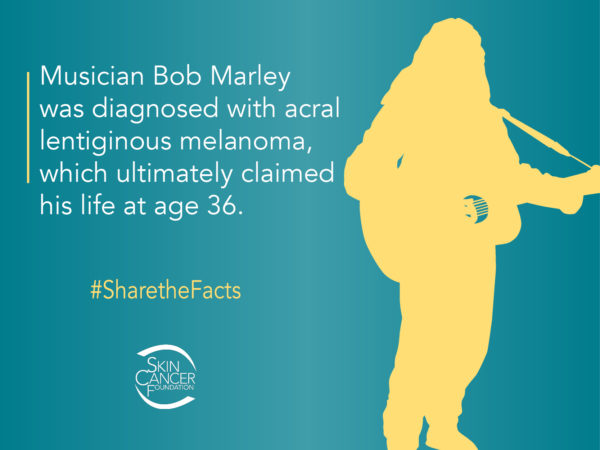Photo credit: Getty Images / Mike Prior
Bob Marley was diagnosed with acral lentiginous melanoma which ultimately claimed his life. Knowing the warning signs of this rare form of melanoma, finding it and treating it early enough can make the difference between life and death.
Legendary Jamaican singer, musician and songwriter, Bob Marley, was born on February 6, 1945. Sadly, Marley did not celebrate as many birthdays as he should have. He died of melanoma in 1981 when he was only 36 years old.
When a dark spot appeared under his toenail, Marley attributed it to a soccer injury. Eventually, he was diagnosed with a rare, aggressive type of skin cancer called acral lentiginous melanoma (ALM). ALM comes from “acral,” an anatomical term for the peripheral parts of the body, and “lentiginous,” for freckled appearance.
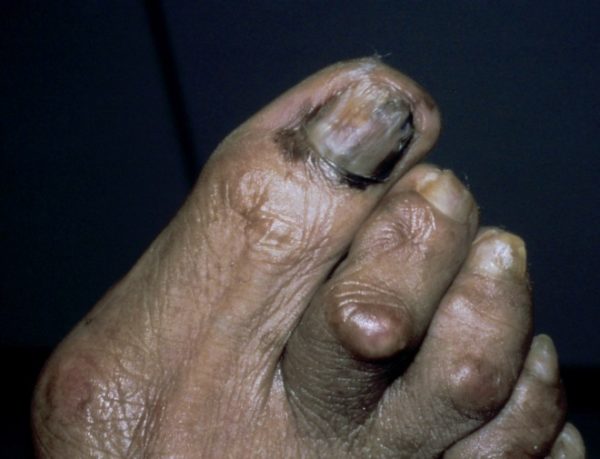
Acral lentiginous melanoma example (not a photo of Bob Marley). Photo credit: Hugh Gloster, MD
Hidden Danger
Most melanomas are caused by exposure to ultraviolet (UV) radiation from the sun or from tanning beds. But ALM, which develops on hairless skin such as under nails, on the soles of the feet or palms of the hands, is more likely caused by genetic factors. While ALM is rare overall, it is the most common form of melanoma found in people of color.
The five-year survival rate for Black people with melanoma is 70 percent. Most deaths from ALM occur when it is diagnosed late, after it has begun to spread. If Marley’s cancer had been treated early, it could have possibly been cured. However he refused the recommended treatment, surgical removal of his toe. Instead of amputating the toe, he opted for excisional surgery, removing the nail bed and cancerous tissue. Eventually, the melanoma spread, or metastasized, to other areas of his body, including his brain, liver and lungs, and tragically cut his life short.
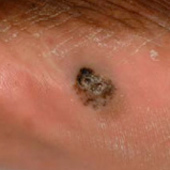
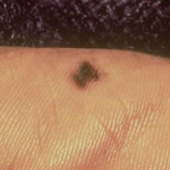
Acral lentiginous melanoma (ALM) photos
When to Check Your Skin
Remembering Bob Marley is a reminder that anyone—of any age or skin tone—can develop melanoma. That’s why it’s so important to check your skin carefully from head to toe every month. Be sure to check areas that don’t get much sunlight, like the palms of your hands, the soles of your feet, and under your fingernails and toenails. If you see anything new, changing or unusual, it’s time to “get up, stand up,” and get it checked out by a doctor.
Search for a dermatologist in your area.
Join the #LoveYourSkin Campaign
In memory of Bob Marley, and to raise awareness about the dangers of skin cancer, we invite you to join our public awareness campaign — #LoveYourSkin — focused on skin cancer education, early detection and sun protection for skin of color.
It’s easy to get involved:
- Follow us on social media
- Share posts, facts and graphics to help spread the word (see below for some graphics to share)
- Use the hashtag #LoveYourSkinProtectYourSkin and tag us @SkinCancerOrg so we can amplify the message
Together, we can help one another, share the facts and the love. Because loving your skin means protecting your skin.
The movie Bob Marley: One Love was released in the United States on February 14, 2024.
Download the Acral Melanoma Awareness Images
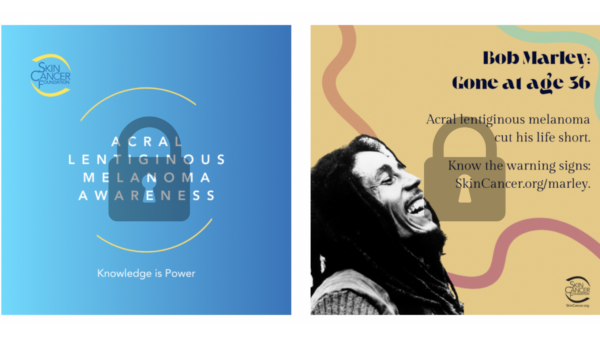
Download the Skin Cancer & Skin of Color Brochure



